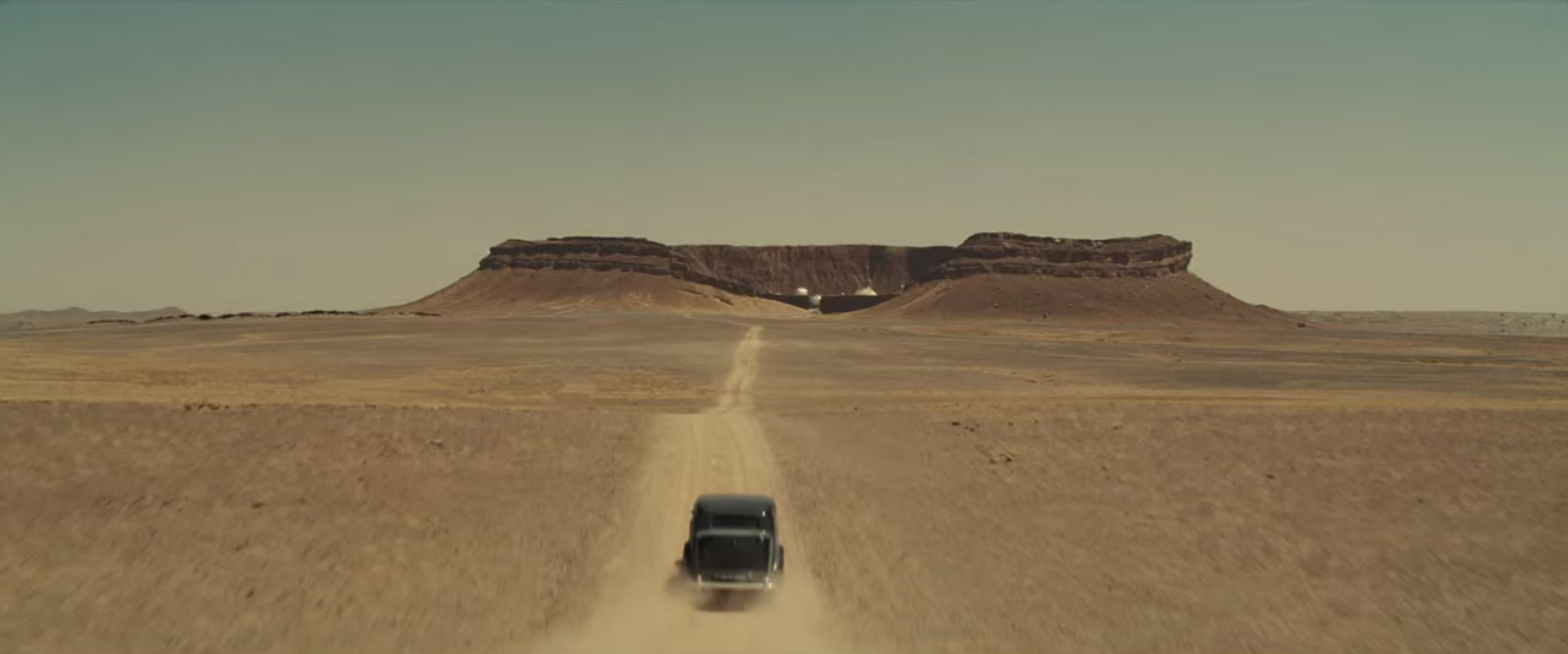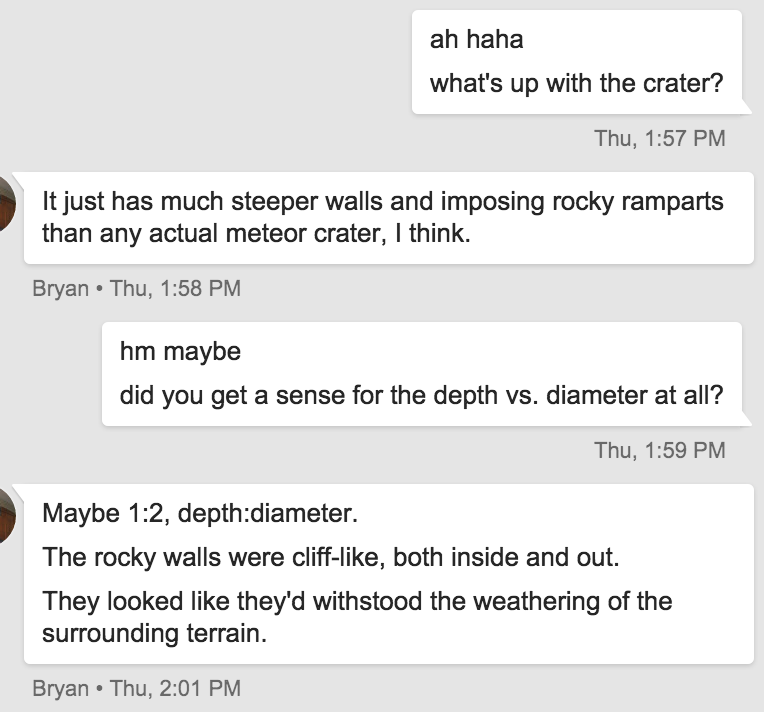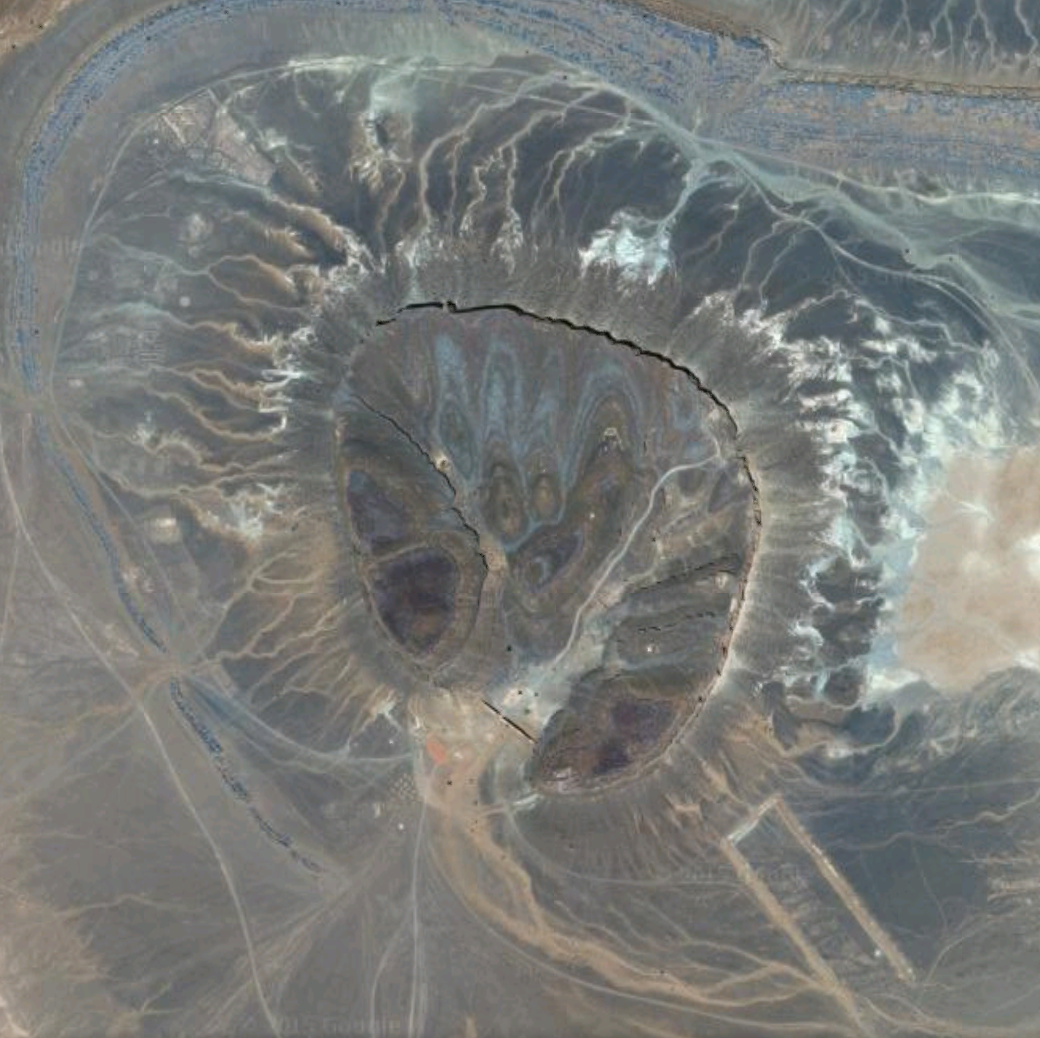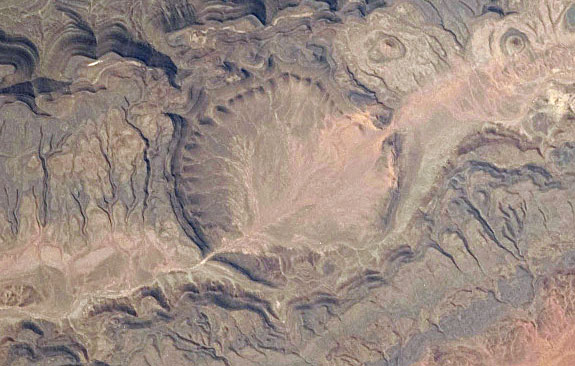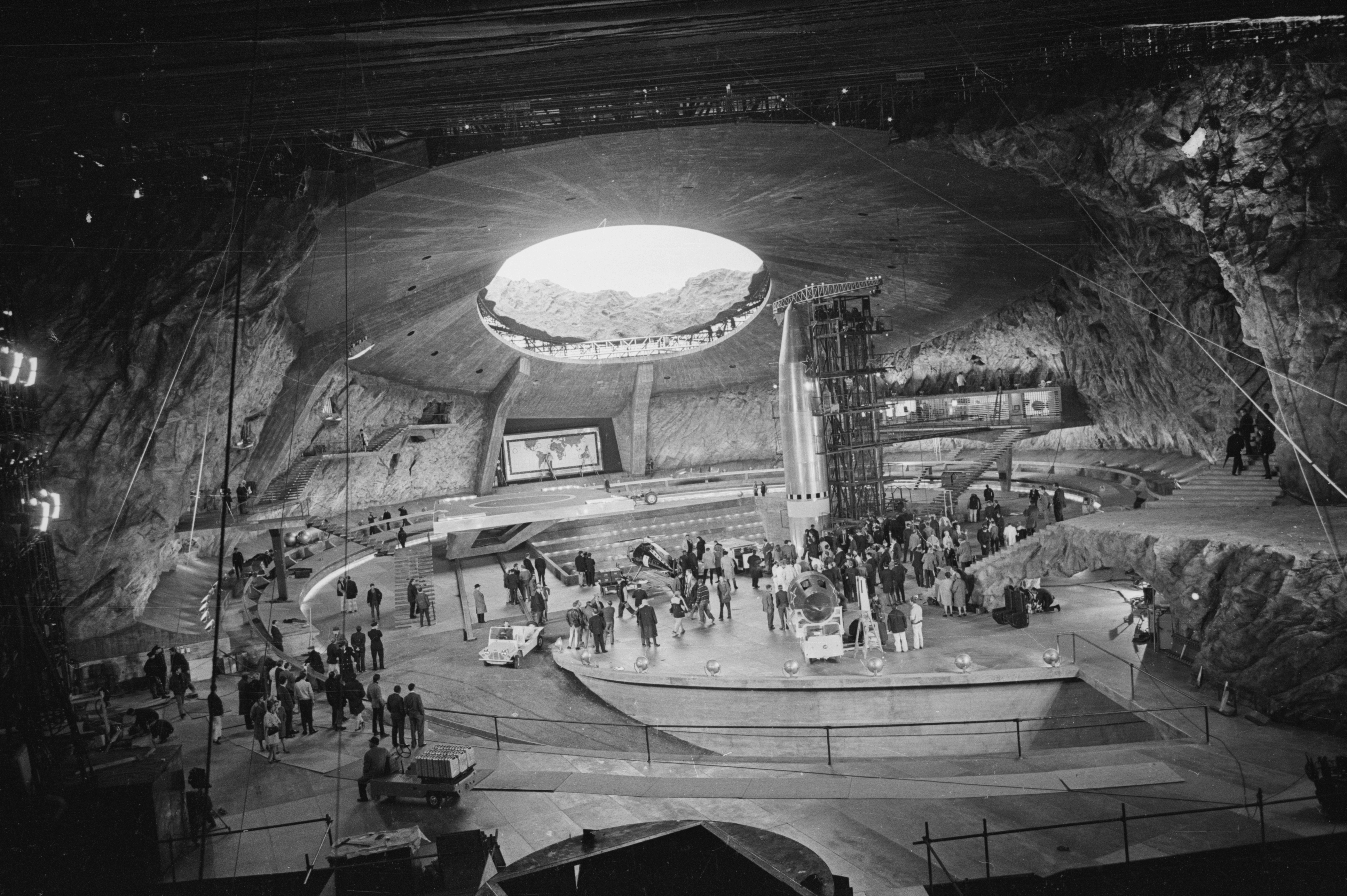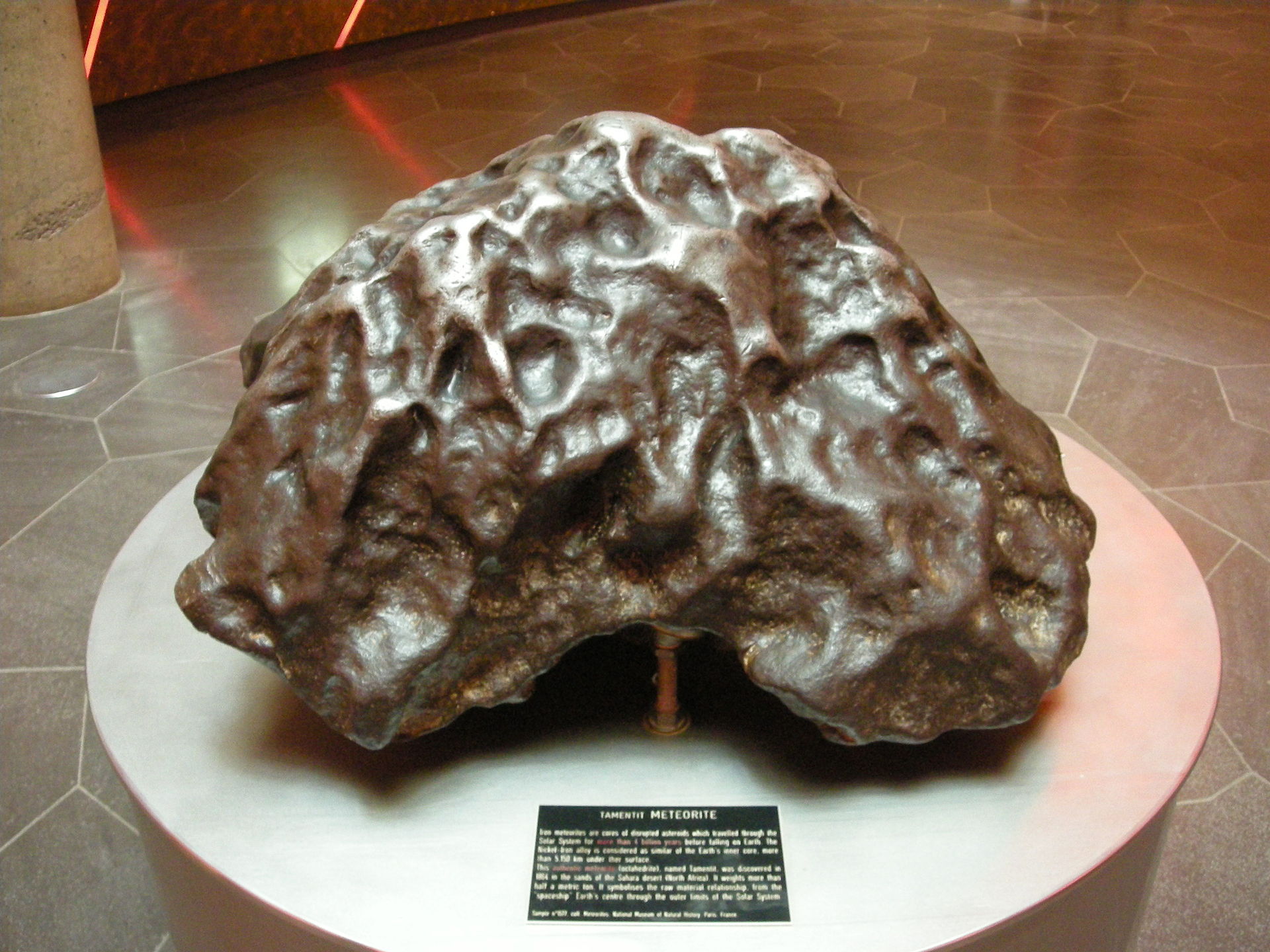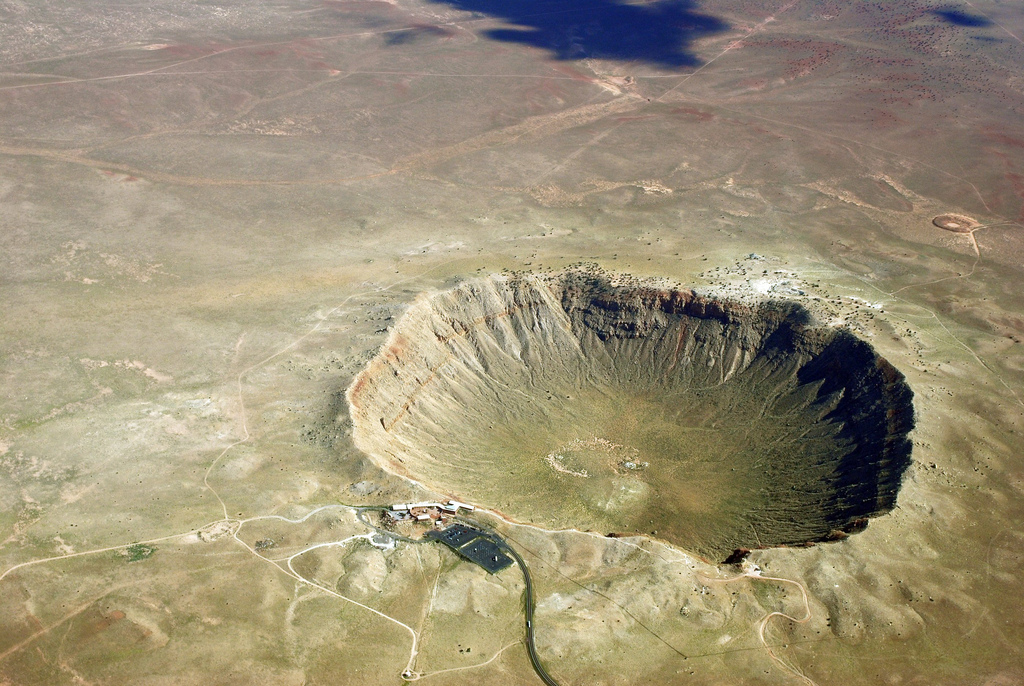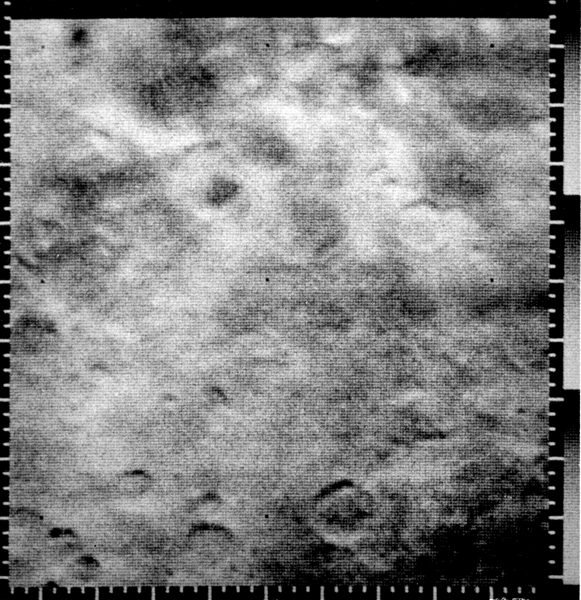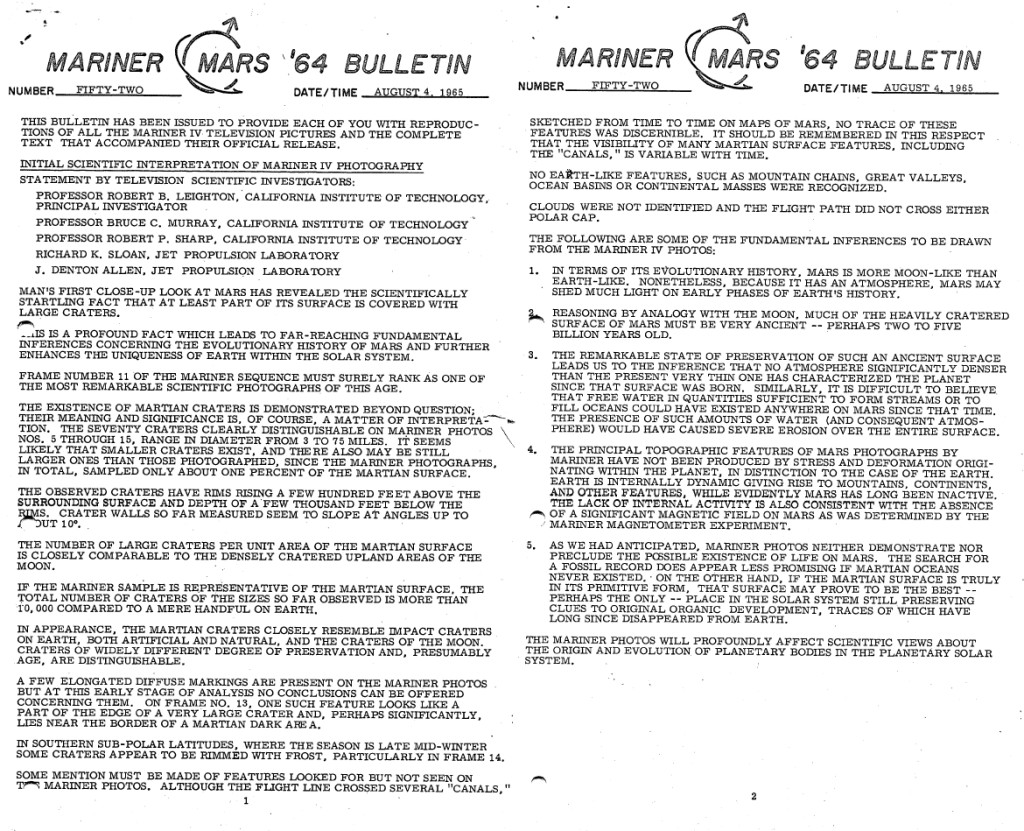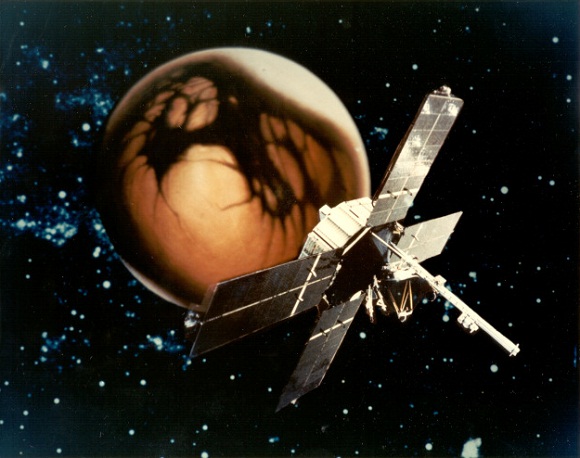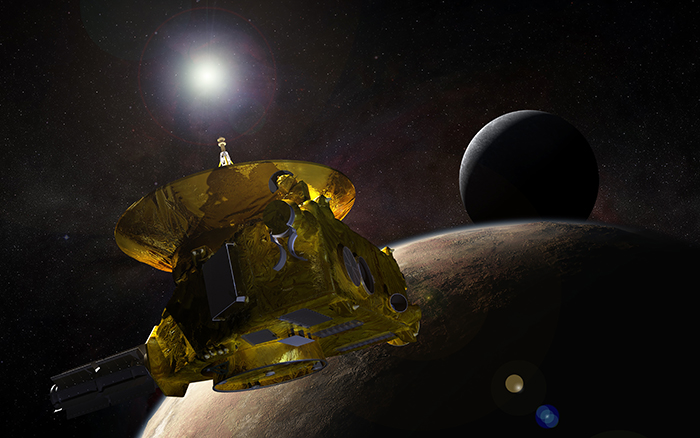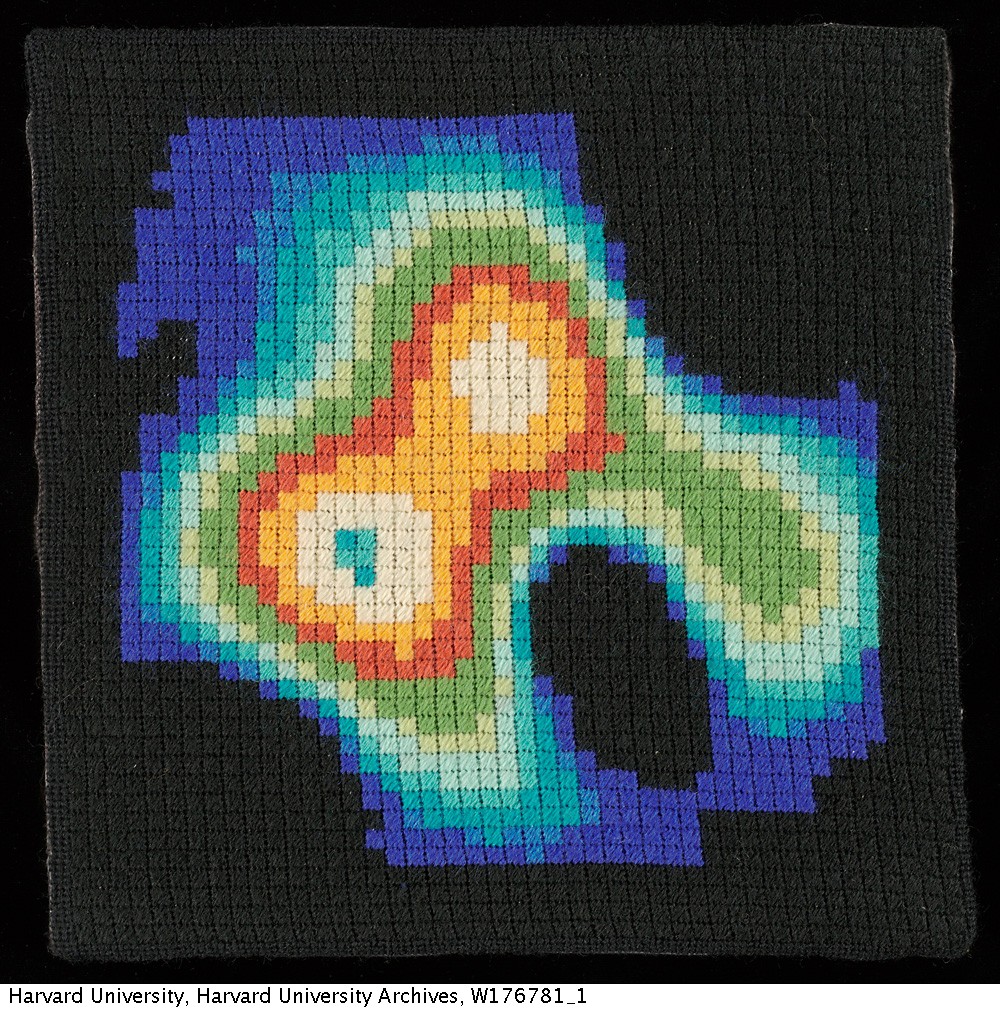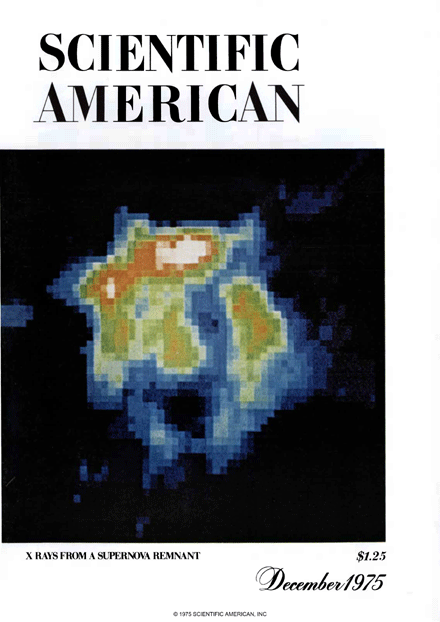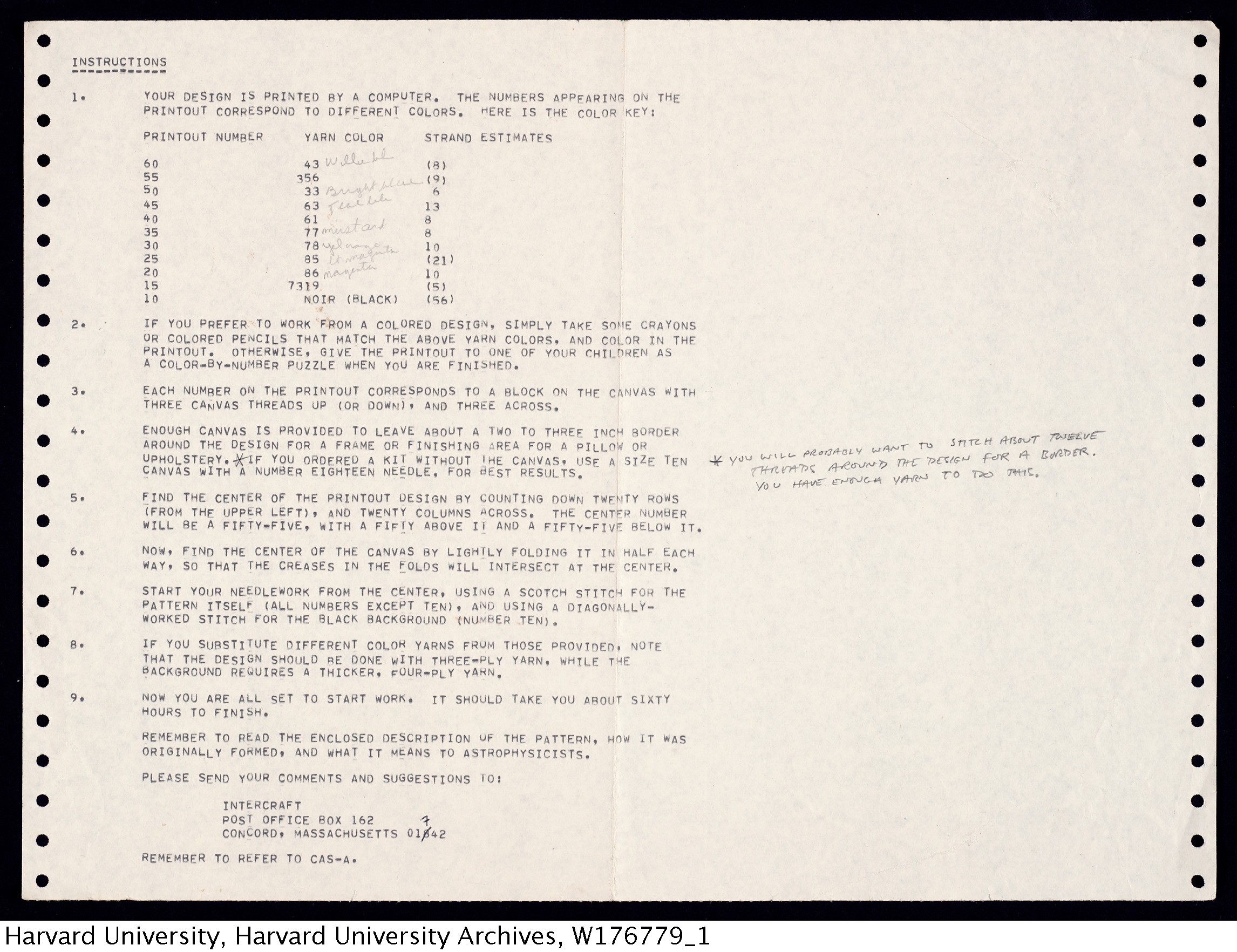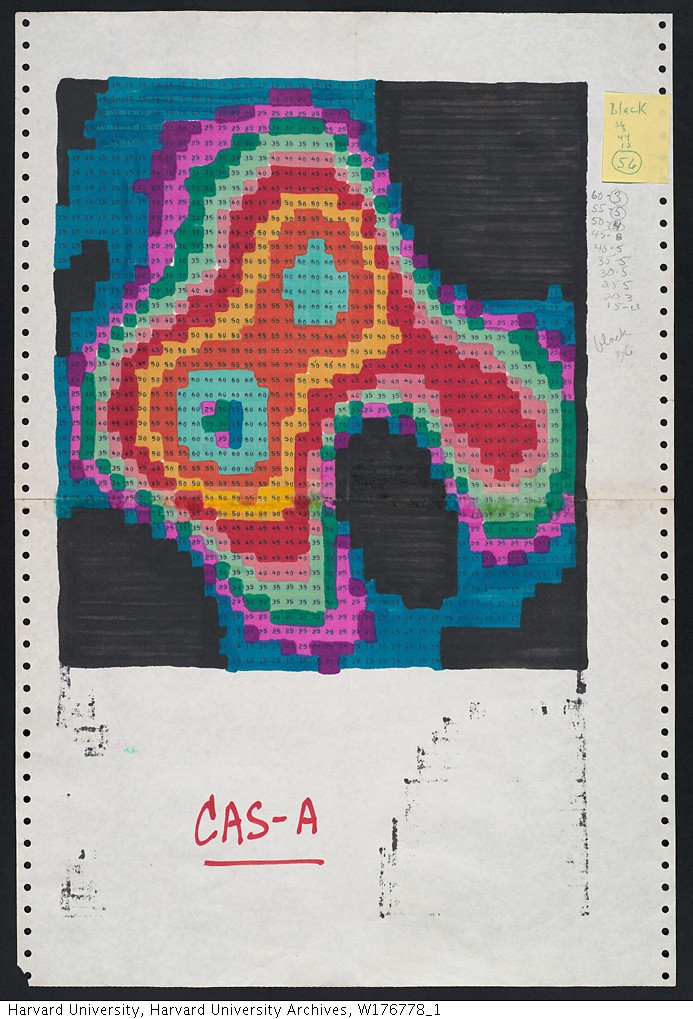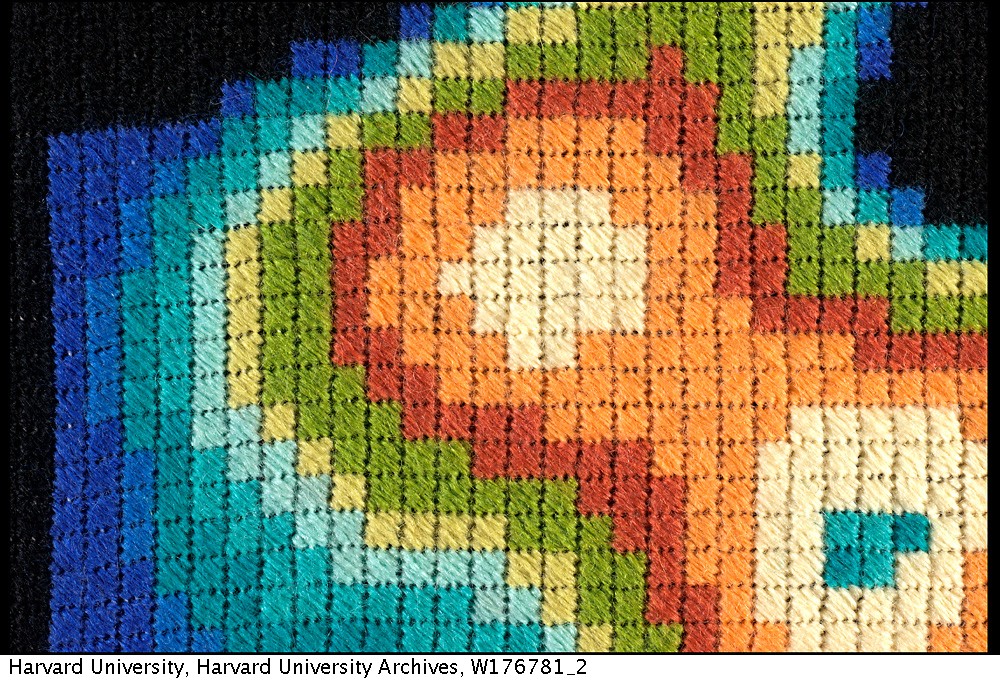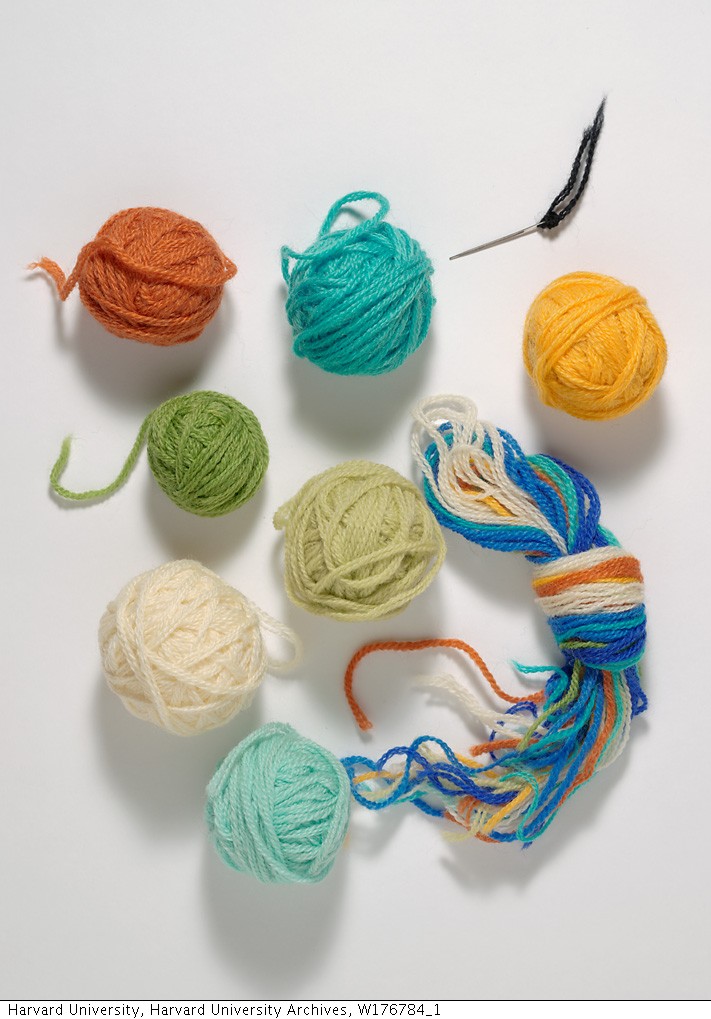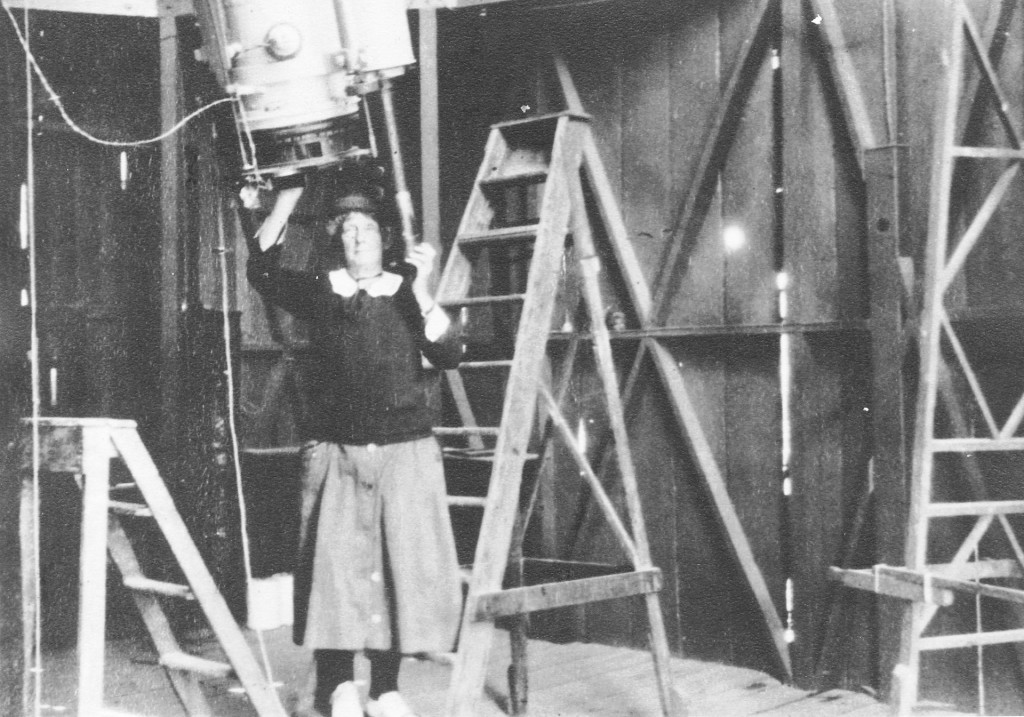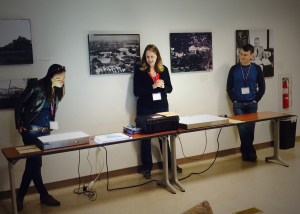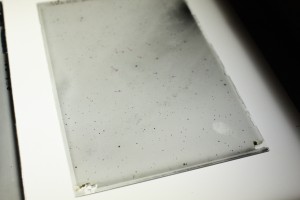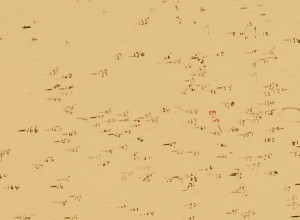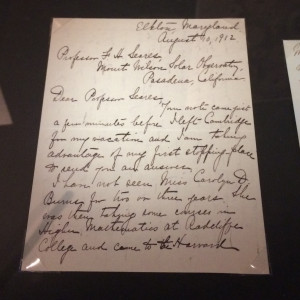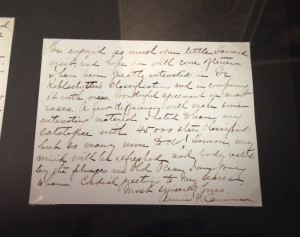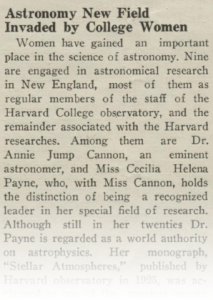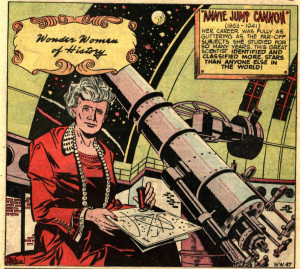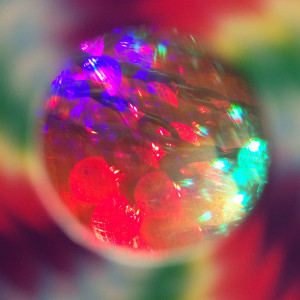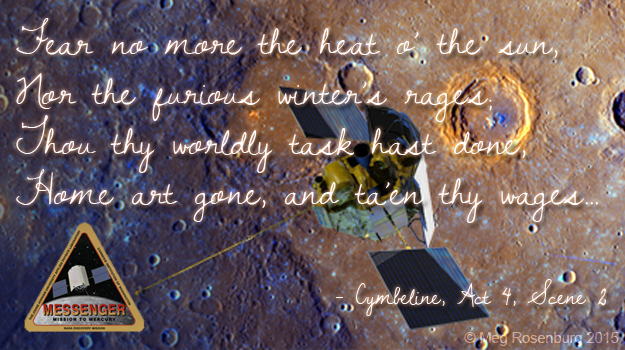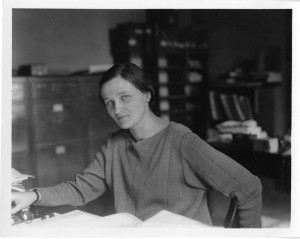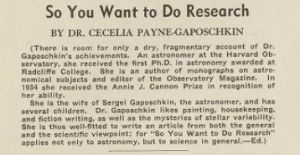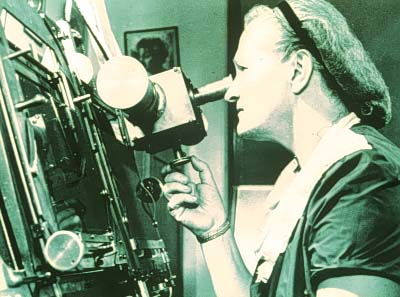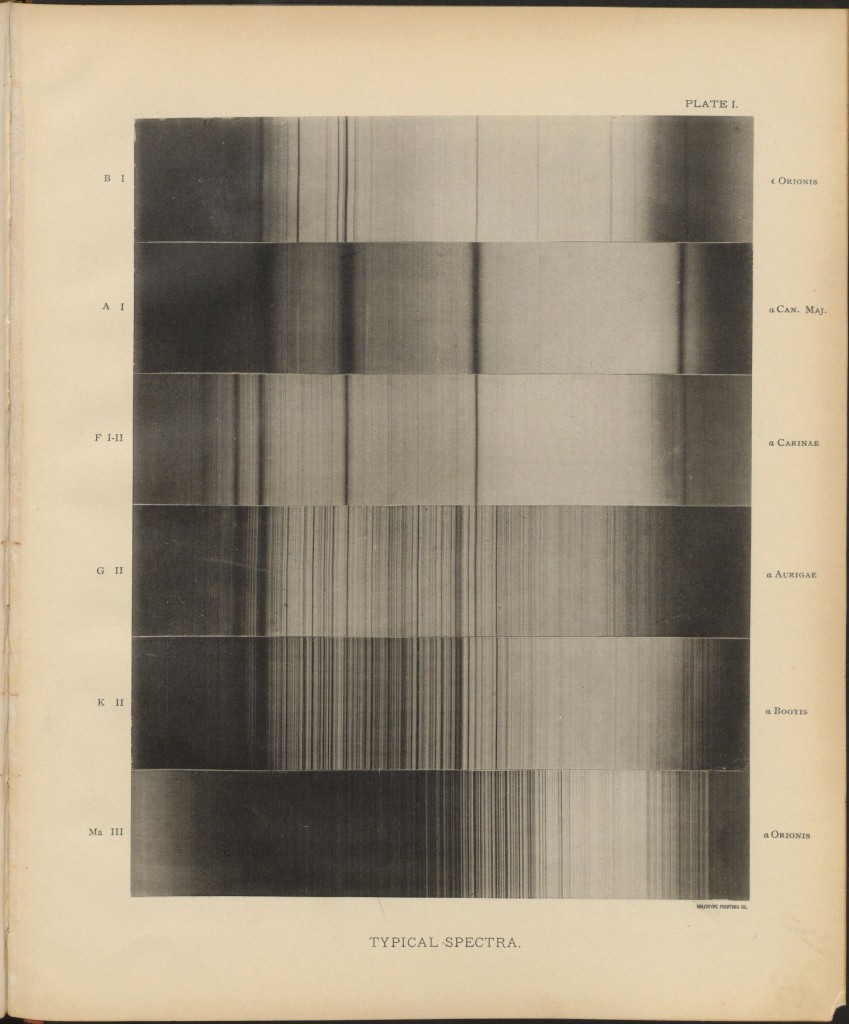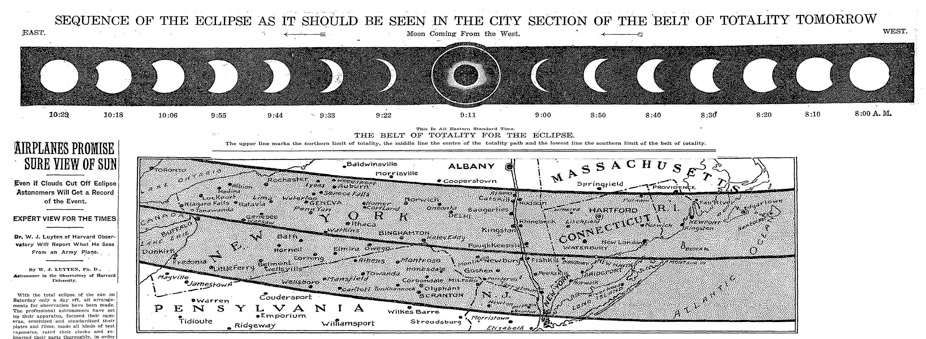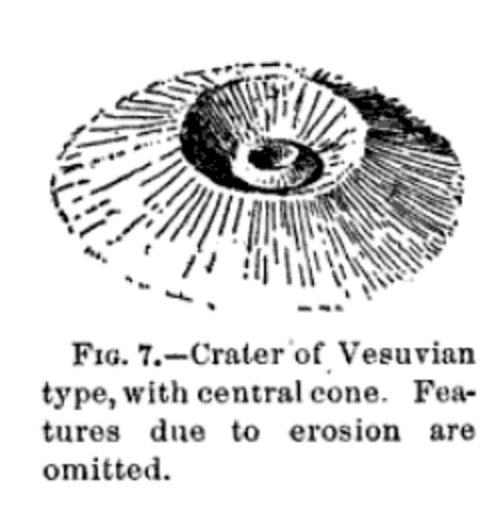
 The lunar crater is sunk in the lunar plain; the Vesuvian is perched on a mountain top…Thus, through the expression of every feature the lunar crater emphatically denies kinship with the ordinary volcanoes of the earth.
The lunar crater is sunk in the lunar plain; the Vesuvian is perched on a mountain top…Thus, through the expression of every feature the lunar crater emphatically denies kinship with the ordinary volcanoes of the earth.
That Gilbert felt like an outsider — a geologist trespassing on astronomers’ territory — is clear from his introduction to The Moon’s Face, and he got a frosty reception from the astronomy community. His fellow geologists weren’t exactly thrilled either, since the Moon (being so remote) was considered too speculative a topic for a solid geologist to spend time on.5 Yet he persisted, convinced that he was precisely the sort of scientist who ought to be studying the features on the Moon, given his experience with the features of the Earth. “[T]he problem is largely a problem of interpretation of form, and is therefore not inappropriate to one who has given much thought to the origin of the forms of terrestrial topography.”
Gilbert may not have changed many minds in his own time, but impact studies have come a long way, thanks in part to his disciplinary transgression. In fact, if anything the planetary pendulum has swung toward impact as the default interpretation for most features in the solar system, and evidence of volcanic activity is heavily scrutinized. Admittedly, I am biased, but I think it’s a bit sad that 120 years after Gilbert’s work, the difference between an impact crater and a volcano is given such short shrift on so public a stage. There’s even a real impact crater just over the border in Algeria6 that would have made a stunning backdrop for Bond’s adventures. Somewhat ironically, the 1967 Bond film You Only Live Twice actually involved an extinct volcano (another Blofeld lair), but it was filmed on a massive purpose-built set at Pinewood Studios. Oh well. Gara Medouar would have been perfect for that, except I suppose that there’s no roof to hide the heliport/missile launcher/command center.7
Anyway, I can understand bowing to the logistics of filming locations and permissions and passing off a volcanic feature as an impact crater, but what about the “meteorite” itself? Here’s a quote from the scene between Bond and arch-villain Oberhauser (Blofeld):
Oberhauser: Do you know what it is?
Madeleine Swann: It’s a meteorite.
Oberhauser: Yes, exactly. The Kartenhoff, the oldest in human possession. The very meteorite which made this crater. Think about it: so many years up there – alone, silent – building momentum until it chose to make its mark on Earth… a huge unstoppable force.
James Bond: Except it did stop, didn’t it? Right here.
Ok, so we’re meant to believe that the “meteorite which made this crater” (more on that later) is also the oldest meteorite in human possession…really? Not having actually seen the movie, I asked my dad what the meteorite in the scene looked like.
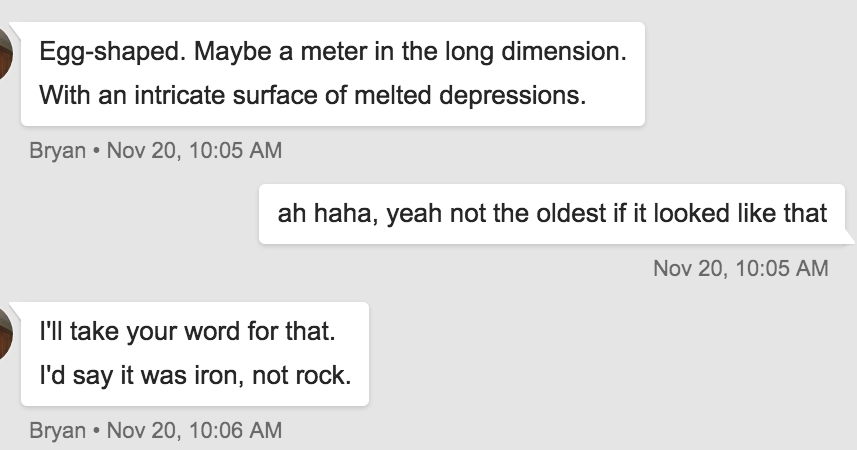
Those melted depressions are called regmaglypts, and they’re formed as the meteorite is passing through the atmosphere. All of that air rushing by at high speed creates a huge amount of friction, and some material is ablated (vaporized) away, leaving these little thumbprint-like hollows. The problem? My dad is describing an iron meteorite, like this one:
Iron meteorites are thought to be the cores of once-mighty proto-planets that have broken apart in some violent collision and eventually made their way across the solar system to land on Earth. By definition, they have melted and recrystallized — they’re not the oldest meteorites! That title goes to the least altered, most primitive samples we can find, the carbonaceous chondrites. Visually, they are less stunning, perhaps not even immediately recognizable as meteorites, but inside they contain the birth records of the solar system. Analyzing these meteorites is the best way we have of understanding the original composition of the pre-solar nebula,8 out of which the Sun and the planets and ultimately you and I formed. We are made of star stuff, yes, but what star stuff? Carbonaceous chondrites tell us that. Some of them, like the Tagish Lake meteorite, even contain unchanged stellar dust particles, grains that predate the Sun. Now that’s OLD.
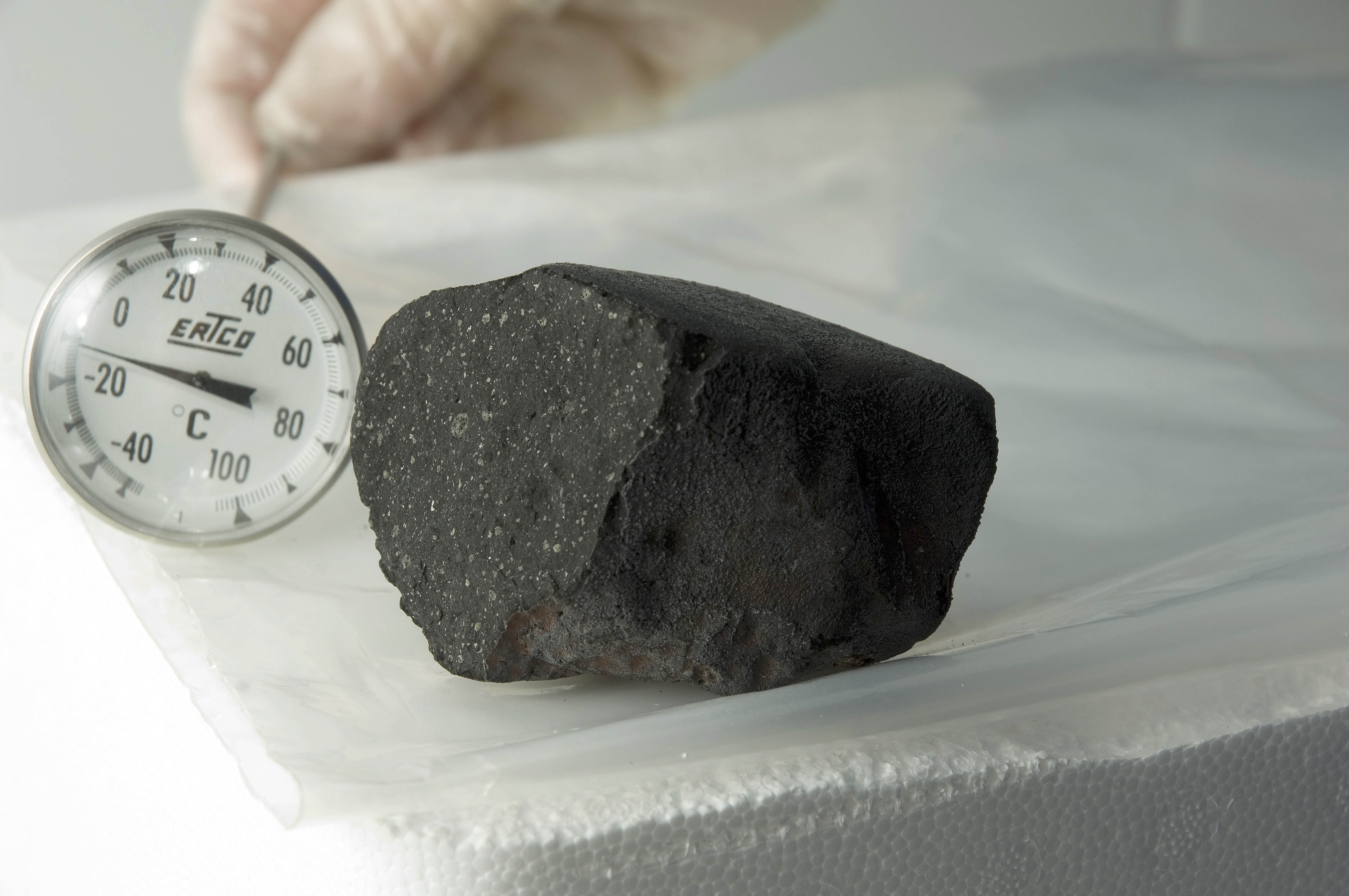
Tagish Lake meteorite, possibly the oldest meteorite in human possession, looks like a boring Earth rock.
But what if Oberhauser meant “this meteorite is from the oldest-known impact“? That assertion doesn’t make sense either. The oldest identified impact structures on Earth don’t really look like craters anymore, thanks to our planet’s tendency to rough up its landmasses via plate tectonics. One candidate for the oldest terrestrial impact structure is Vredefort crater in South Africa. Only the central dome survives, the rest of the crater having been eroded and filled in over the two billion years since its formation. Compared to the relatively pristine Barringer Meteorite Crater (Meteor Crater) in Arizona — a sprightly 50,000 years of age — Vredefort is hard to spot. It takes geological evidence in the form of impact-generated mineral phases, glass spherules, and shattercones to identify the oldest craters.
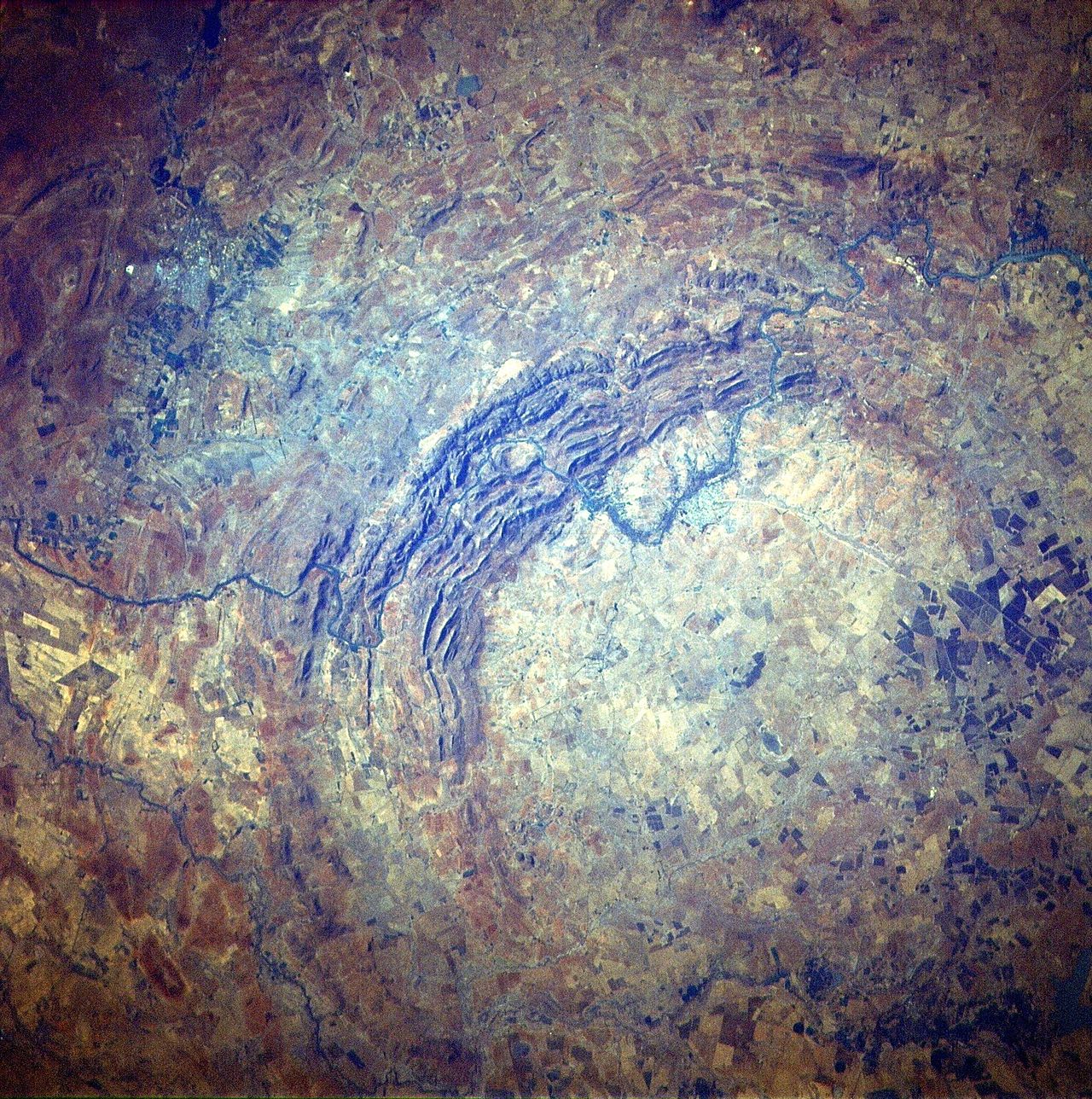
Vredefort Dome, 2 billion years old
It’s not the oldest meteorite, and it’s not the oldest crater. Either Oberhauser has been badly misled when it comes to his collection, or the writers really didn’t care very much about getting the science right in this case. Does it really matter? Perhaps not, but it’s certainly a missed opportunity. With just a little bit more research, they could have turned real science facts into support for their story. It wouldn’t even have been that hard. Oberhauser seems to be talking about himself in this scene, using the meteorite as a convenient vehicle to talk about his own journey and motivations. Call me crazy, but incorporating some dialogue about refining a central iron core that’s ultimately flung onto a crash course with humankind by a violent event deep in the past doesn’t sound completely out of line with the Bond villain archetype. It’s a far more fitting metaphor than “the very meteorite which made this crater,” seeing as the parts of the (much bigger) impactor that actually made the crater wouldn’t be around any more to provide a backdrop for this conversation.9 The meteorite is the part that survived — the resourceful, resilient fragment of a much larger entity. Given a chance, the science here really could have augmented the story, but SPECTRE passed on that chance, and I can’t help but feel a little disappointed that it did.
- Fans of The Mummy (1999) might recognize Gara Medouar as Hamunaptra, the City of the Dead, and it was also featured in The Prince of Persia: The Sands of Time (2010). ↩
- The word “crater” itself can apply to an impact structure or a volcanic caldera. Fun fact: although it’s commonly used by scientists in the impact context today, it started out purely in the volcanic realm and was first borrowed to describe lunar features by Johann Schröter in the late 18th century. The volcanic connotation of the word influenced the interpretation of lunar and terrestrial craters well into the 20th century. ↩
- For impact craters, the height of the rim above the surrounding plane scales approximately as 4% of the crater’s diameter, less than half what we see here. ↩
- That’s for simple craters, which are relatively small. Complex craters, which have diameters above ~15km on the Moon and ~2-4km on Earth, are even shallower. ↩
- Gilbert’s first biographer described this work as his “lunar excursion.” ↩
- All right, fine, it’s hundreds of miles away and in a completely different country, so that’s not probably not feasible for filming. ↩
- Sigh, James Bond…see what I mean? ↩
- The composition of the Sun itself is another good clue, but it’s hard to measure some elements, so we turn to meteorites to learn more. ↩
- Impact energies are so large that much of the impacting body doesn’t survive the impact. ↩

